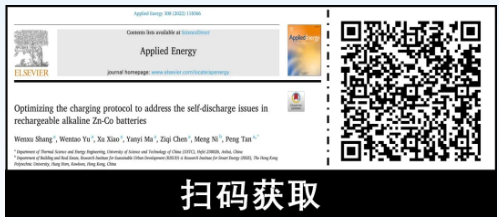原文信息:
Optimizing the charging protocol to address the self-discharge issues in rechargeable alkaline Zn-Co batteries
原文链接:
https://www.sciencedirect.com/science/article/abs/pii/S030626192101610X
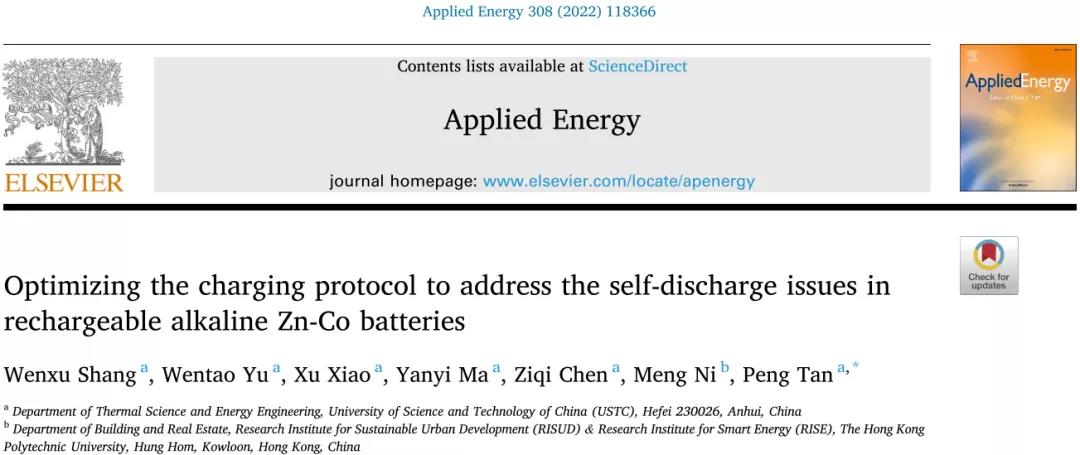
Highlights
• The self-discharge performance of a Zn-Co battery is investigated systematically.
•A new charging protocol is proposed to increase the amount of high valence state.
• The discharge capacity is improved from 220 to 290 mAh/g owing to activation.
• The capacity retention ratio after 10h delay lifts from 72% to 90%.
Abstract
Aqueous rechargeable Zn-Co batteries feature intrinsic safety and excellent electrochemical performance, and zinc metal is cheap with abundant reserves. However, a key issue, self-discharge, which may be fatal to the application, is always overlooked. Herein, the self-discharge performance is investigated systematically for the first time, and in-depth charge-discharge mechanisms are analyzed. Based on a free-standing Co3O4 electrode, the insufficient utilization of the active material is found under a conventional galvanostatic charging process. Additionally, a dramatic attenuation in the open-circuit voltage is exhibited during the delay, leading to poor capacity retention. Through electrochemical tests and ex-situ characterization, the limited capacity and the severe self-discharge behavior are ascribed to the low amount and poor stability of the high valence state, respectively. Aiming at suppressing the self-discharge behavior, a novel charging protocol is proposed based on a new mechanism, which uses a time-controlling potentiostatic charging after the galvanostatic charging process. Using this strategy, the discharge capacity increases effectively by about 31.8% from 220 to 290 mAh/g, and the capacity retention ratio after 10 h delay lifts from 72% to 90%. More importantly, the discharge capacity remains 100% after even 2500 cycles. This work puts forward a practical method for the operation of Zn-Co batteries, addresses the limiting issues for application, and greatly facilitates the improvement of this technology. Further, the results also inspire the research of other rechargeable Zn-based batteries.
Keywords
Zn-Co batteries
Charging protocol
High capacity
Low self-discharge rate
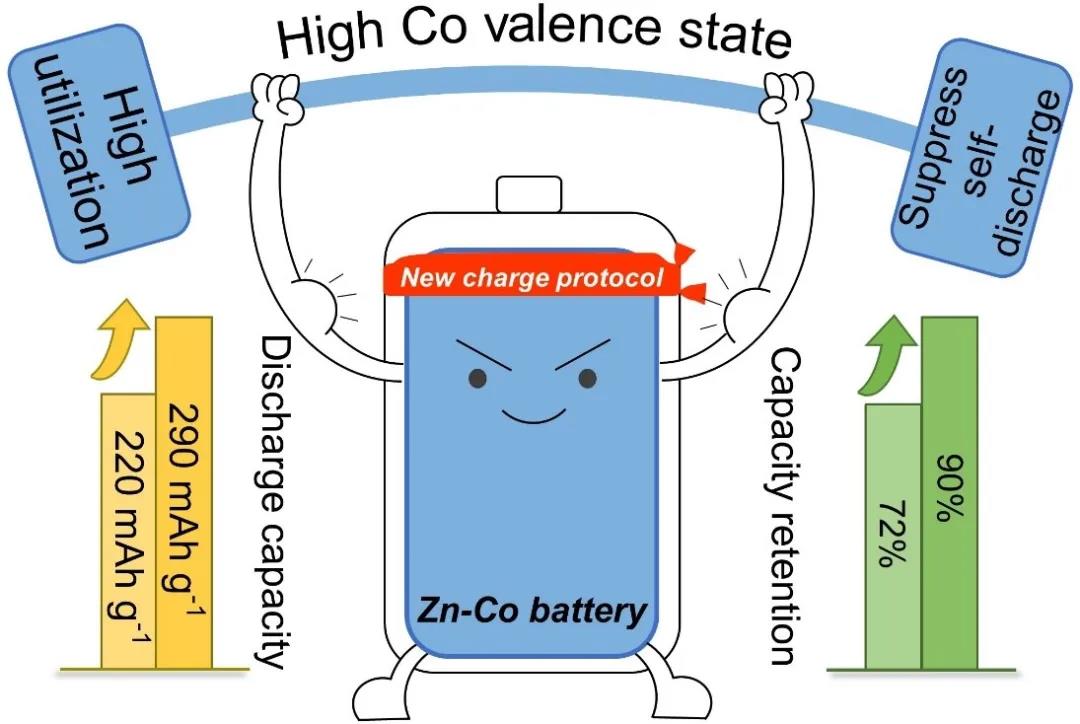
Fig.1. Graphical Abstract
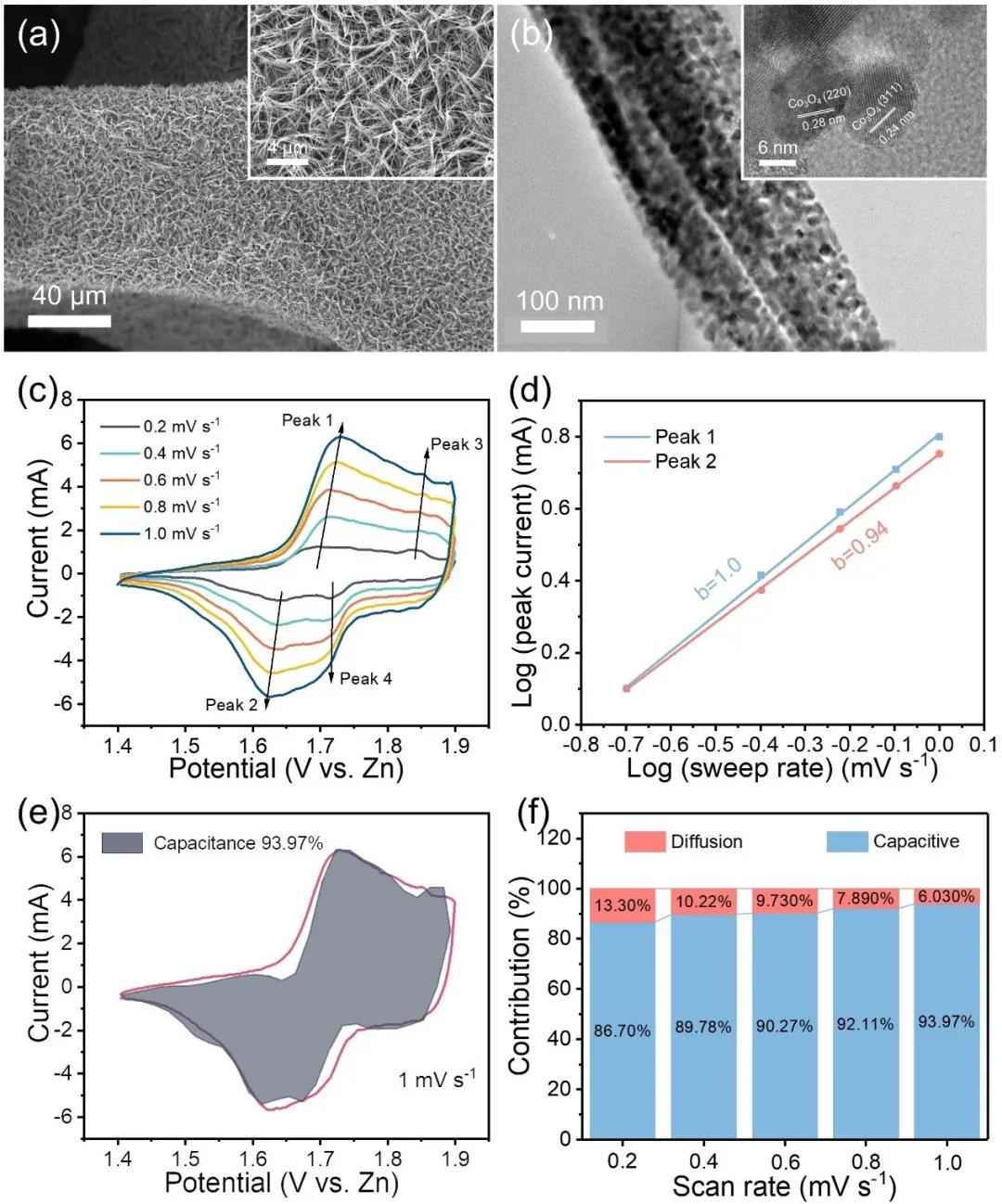
Fig.2. (a) SEM images and (b) TEM images of Co3O4, and the insets show the high-magnification images. (c) CV curves of Co3O4 at various rates and (d) the corresponding fitted b-values at different redox peaks. (e) CV curve of Co3O4 at 1 mV/s and the corresponding pseudocapacitive contribution (shaded area). (f) Normalized contribution proportions of capacitance and diffusion at various scan rates.
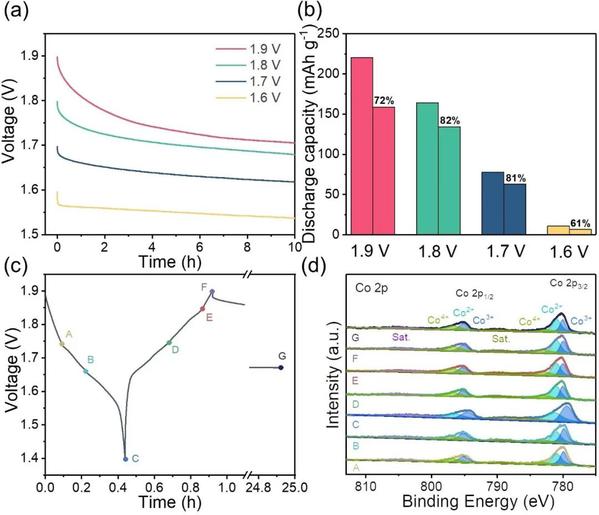
Fig.3. (a) The voltage variation after charging to different voltages during the delay for 10 h and (b) the corresponding discharge capacities (left: pristine; right: after the delay). (c) Voltage-time curve and the selected points for test and (d) the corresponding Co 2p XPS spectra.
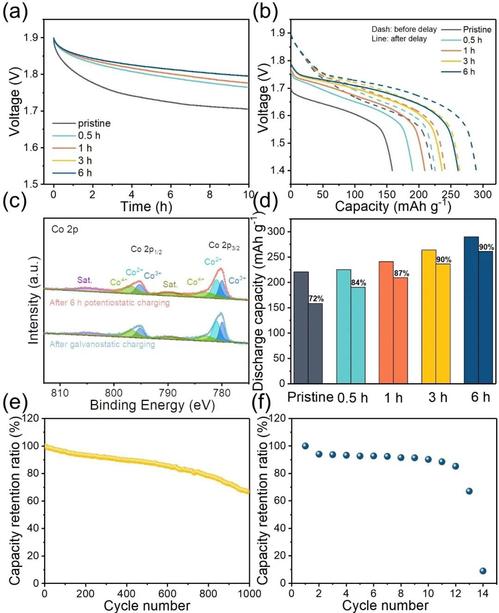
Fig.4. The battery performance under the potentiostatic charging protocol: (a) The voltage variations using different potentiostatic charging time during 10 h delay. (b) The discharge curves before and after potentiostatic charging. (c) The Co 2p XPS spectra after 6 h potentiostatic charging and after charging. (d) The corresponding discharge capacities (left: pristine; right: after delay). The capacity retention ratios during cycles after potenti

Fig.5. The capacity retention ratios during 2500 cycles for the Zn-Co battery with 10 min potentiostatic charging and pristine one.
(来源: )

